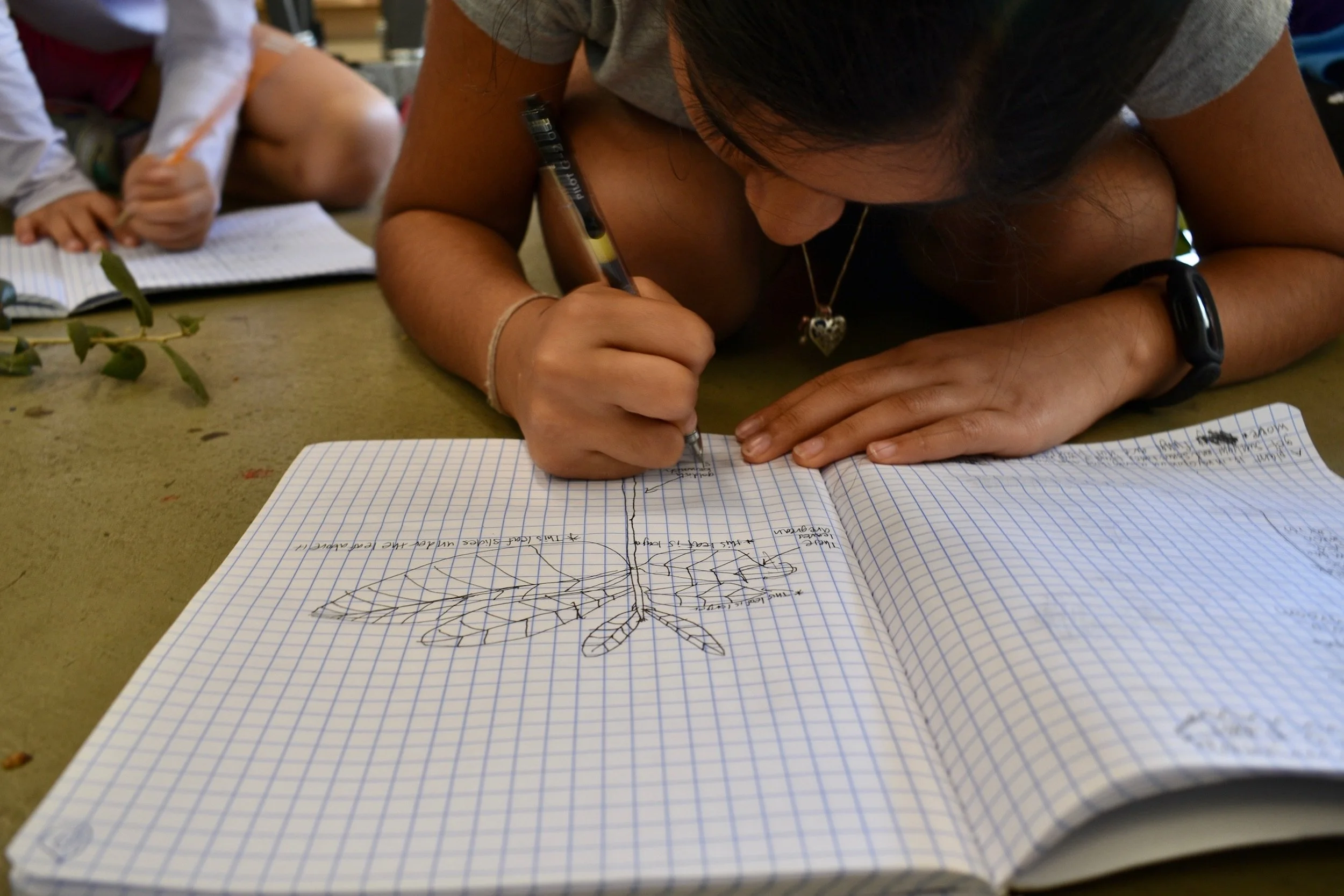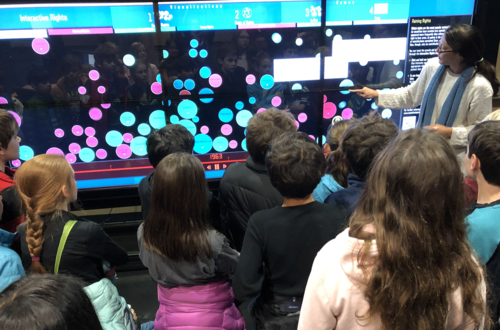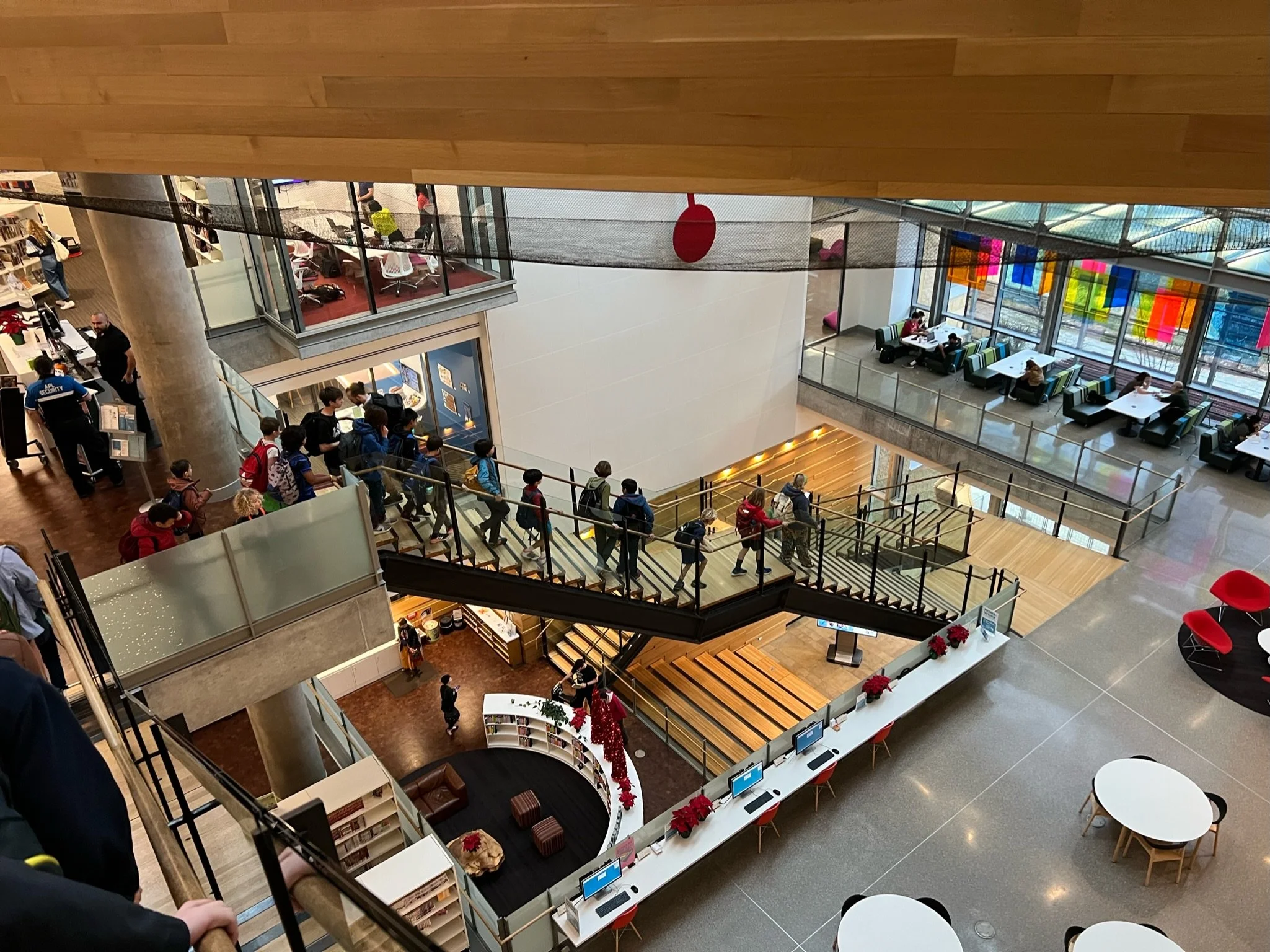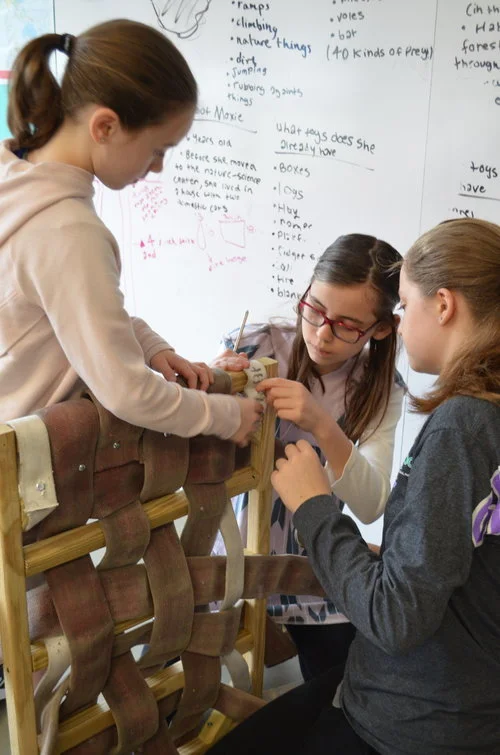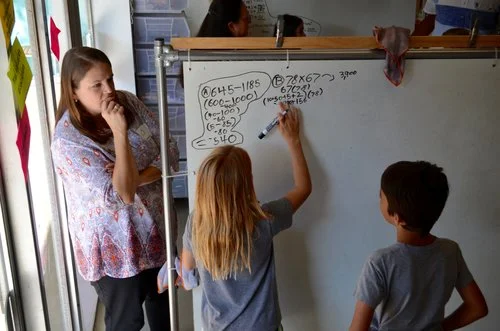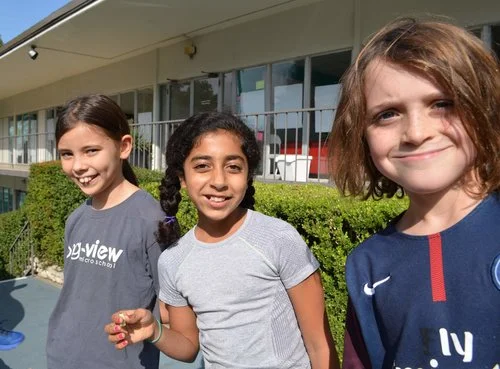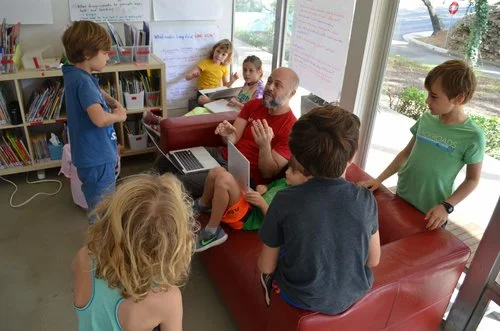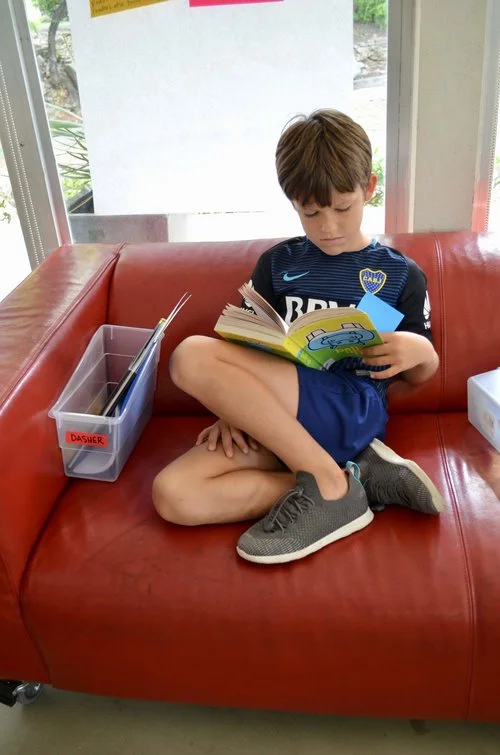Studying graphs and thinking about data visualization has been a thread across the year, most especially during Campfire conversations and in Science Block. We’ve regularly analyzed and discussed some of the amazingly beautiful and fascinating graphs highlighted in The New York Times’ “What’s Going On With This Graph?” program, and our young scientists have had many thoughtful lessons and discussions related to how scientists use graphs to analyze and communicate data (great example can be found here). Yesterday, Auburn and Navy Banders walked over to The University of Texas’ VisLab to learn more about data visualization.…
Read MoreIf you’ve visited Long-View, you know we are situated in a retro-style building that has floor to ceiling windows on all external walls. Every academic space thus has a big view of the world outside our school; depending on which room you are in, your view may encompass the leafy branches of a tree, cars on a busy street, or cyclists headed home. The school feels open and connected to the world beyond our walls, and truly is connected. In every way we can, we think of Long-View as a porous organization, and work to use and be part of the wider ecosystem of learning that exists around us….
Read MoreTo kick off their environmental science unit, Teal and Indigo Bands headed out this morning for a half day excursion to Whirlpool Cave through Austin Watershed Protection. They climbed deep into the Edward’s Aquifer via caves to explore Austin's unique Karst topography and learn more about our city’s watershed. This experience will be helpful as they later move into a project focused on water quality in which the learners will develop their own water filtration systems.….
Read MoreBuild Week 9 began with an unusual sight: two yellow school buses parked outside of Long-View. The kids arrived bundled up for the sub-freezing weather and brimming with guesses about where the buses were headed. But the tight-lipped teachers weren’t about to let the cat out of the bag. Instead they ushered the kids inside to find the lanyards designating their team names.
Read MoreLong-View supports the learning of both our amazing student population, as well as the learning of schools from across the world. Through the number lab, our joint venture that is focused on teacher education, Long-View Micro School students and faculty share in the mission of helping other teachers meet the challenge of educating children at high levels in mathematics….
Read More“Oh, we don’t give grades.”
It’s a remark that continues to raise eyebrows among parents and even educators. And understandably so: letter-grades are so entrenched in American schools as the measure of achievement that a school without them can seem lax or even negligent, as though it has no interest in assessing its learners’ progress.
But at Long-View, nothing could be further from the truth….
Read MoreIn the world of computer science the term “wireframing” is a common phrase widely used by programmers. Wireframing is a way to design a website at the structural level and is used to lay out content and functionality on a page which takes into account user needs and user journeys. Wireframes are used early in the development process to establish the basic structure of a page before visual design and content is added. A website wireframe, also known as a page schematic or screen blueprint, is a visual guide that represents the skeletal framework of a website.
So, what does that have to do with the learners at Long-View?
Read MoreMy colleagues and I started Long-View Micro School because we wanted school to be the most interesting part of a child’s life. We believed that to be possible. Long-View serves as the school home for 64 2nd – 8th graders who experience school as a place where they learn to think, a place where they can take initiative, a place where they have extended challenge, a place that opens them up to the fascinating parts of the world.
Micro schools – if you aren’t familiar with that genre of schooling – are gaining attention nationally as a model that…
Read MoreOur learners in Navy Band and Auburn Band are learning to read, analyze, write, and debug Python programs. As part of their experience, the kids spend a significant portion of each Computer Science block creating programs to solve coding challenges.
Creating a program to solve a challenge often takes significant cognitive work. It isn’t just the syntax of Python that one needs to know….
Read MoreAt Long-View, we work to protect our reading minutes and be sure that literacy instructional time does not go to activities that do not involve “eyes on print.” We protect time for independent reading, and know that explicit and high-level instruction, access to high-interest texts, and volume are crucial.
That being said, there is not enough time for independent reading during the day at school. We hold ambitious goals for daily reading at home….
Read More
